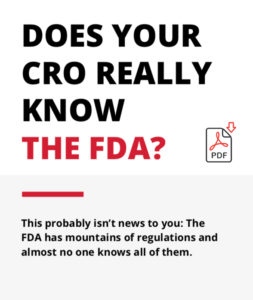Six Factors that Determine if a REMS is Needed

Yesterday, April 4th, 2019, the FDA issued new industry guidance for Risk Evaluation and Mitigation Strategy (REMS). This final guidance clarifies how the FDA applies six factors in determining whether a REMS is required for a particular drug and what type of REMS might be necessary (i.e. what specific elements or tools should be included as part of the REMS) to ensure that the benefits of a drug outweigh its risks. If the drug has been shown to be effective but is associated with a specific serious risk, REMS might be required to manage and mitigate a specific risk.
A REMS could include a Medication Guide, a patient package insert, communication plan, or elements to assure safe use (ETASU).
Six factors the FDA considers when deciding whether to require a REMS
- The seriousness of any known or potential adverse events that may be related to the drug and the background incidence of such events in the population likely to use the drug;
- The expected benefit of the drug with respect to the disease or condition;
- The seriousness of the disease or condition that is to be treated with the drug;
- Whether the drug is a new molecular entity;
- The expected or actual duration of treatment with the drug;
- The estimated size of the population likely to use the drug.

The guidance is applicable for both approved drugs and new drug applications. For approved drug products that were initially approved without ETASU, FDA may require ETASU, as part of a REMS, to mitigate a serious risk listed in the labeling of the drug. For a new drug application, FDA could require a REMS before initial approval, in terms of six factors above mentioned.
Specifically, generic drug manufacturers might benefit more from a REMS. When a generic drug developer wants to market a generic version of a brand drug that has a REMS with ETASU – the brand and generic drug makers are required to develop a single, shared REMS program. The process is helpful for generic drug manufacturers to develop their generic product and to conduct testing to show that their product is bioequivalent to the brand drug for FDA approval.
Next Steps:
Read our analysis on other FDA Guidelines.
Schedule a one-on-one call to see how Princeton can help solve your challenges.
See how Princeton’s services can help you.
Subscribe to our blog to stay up to date.